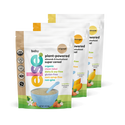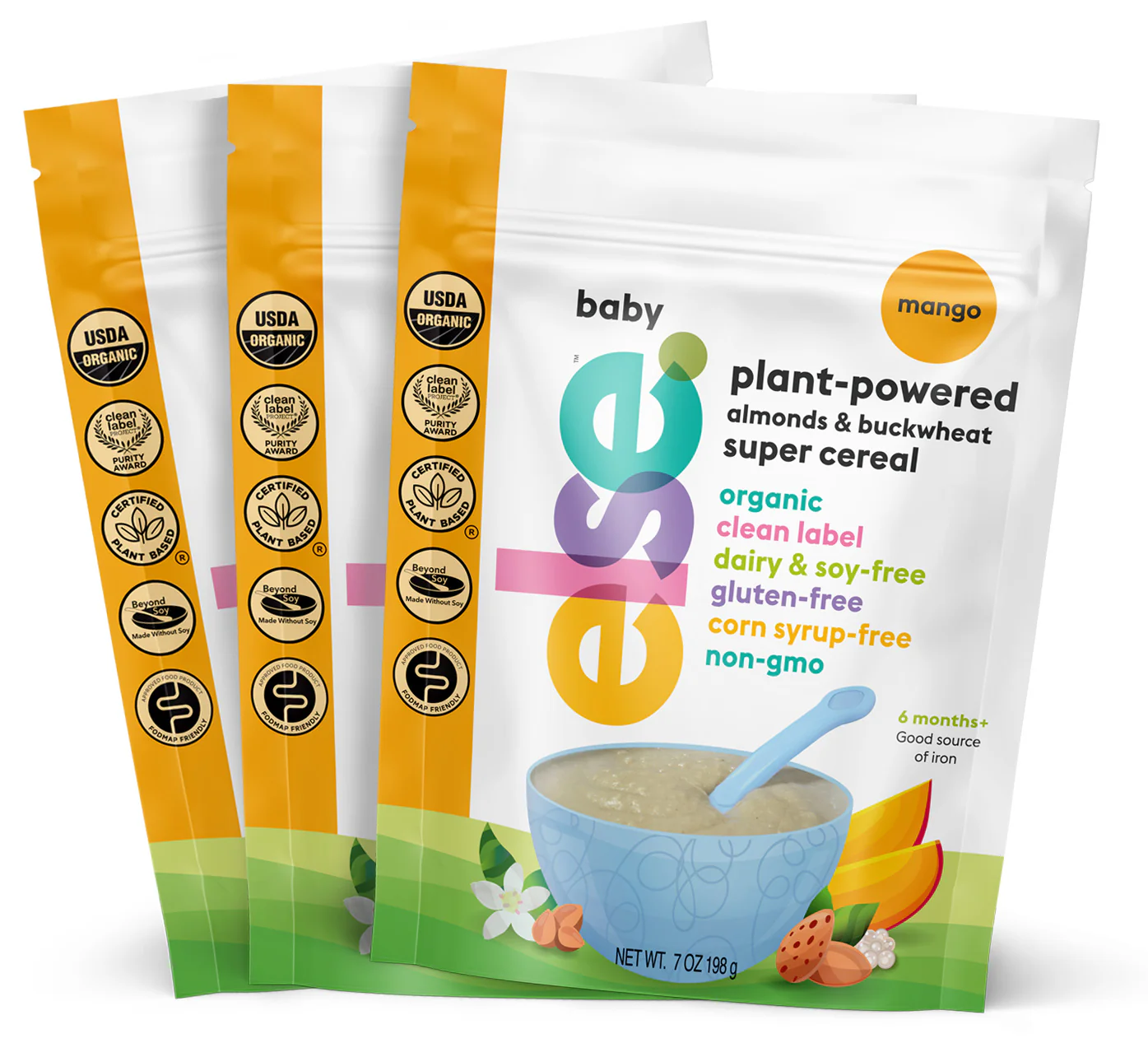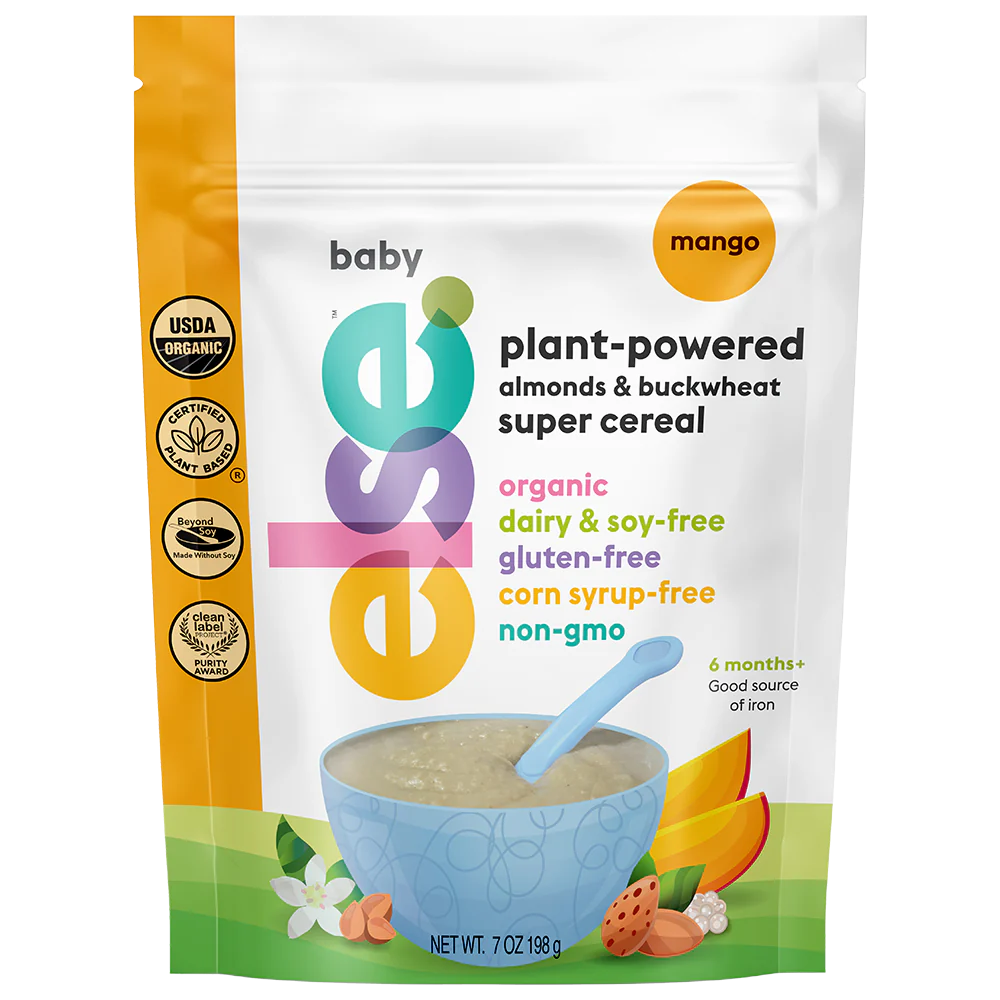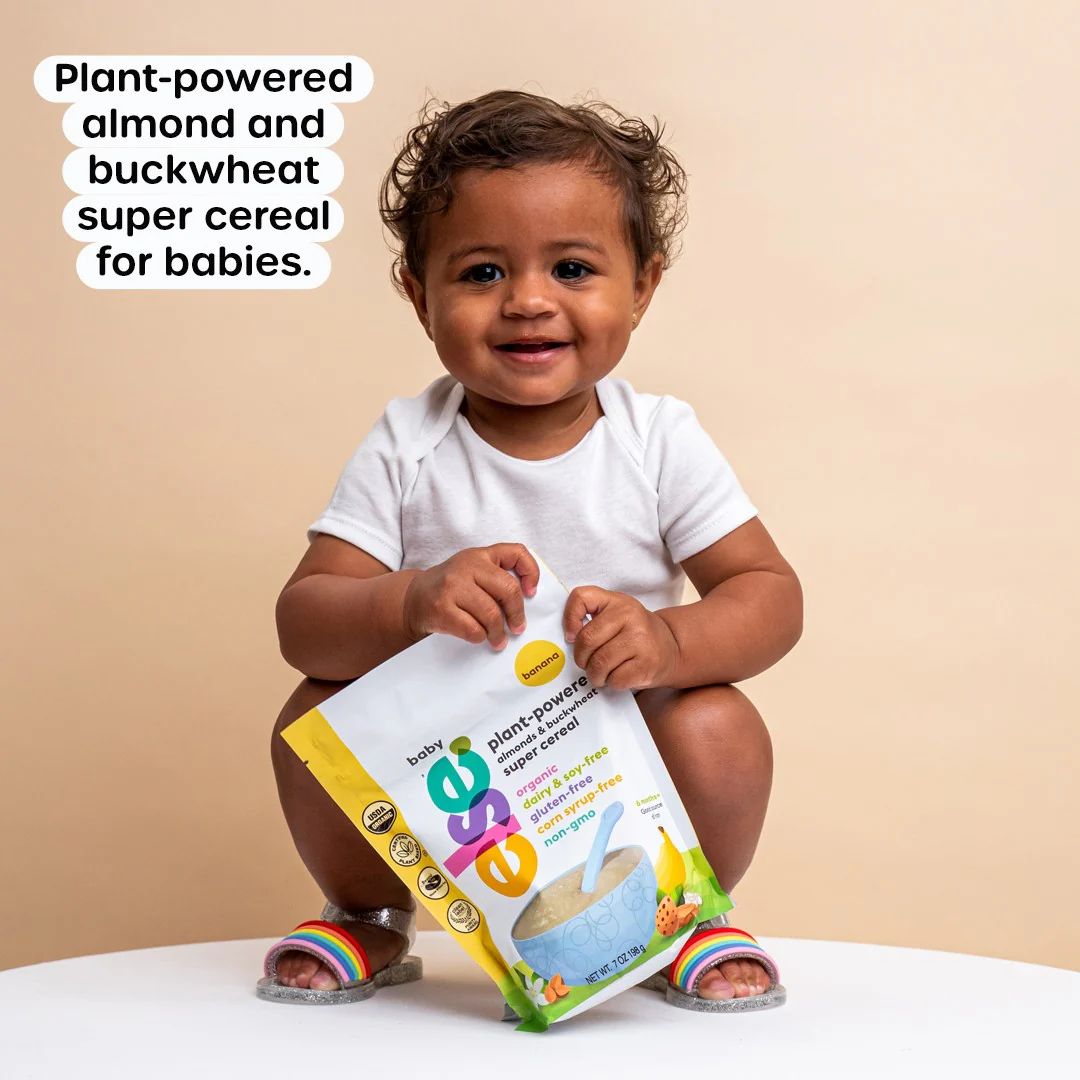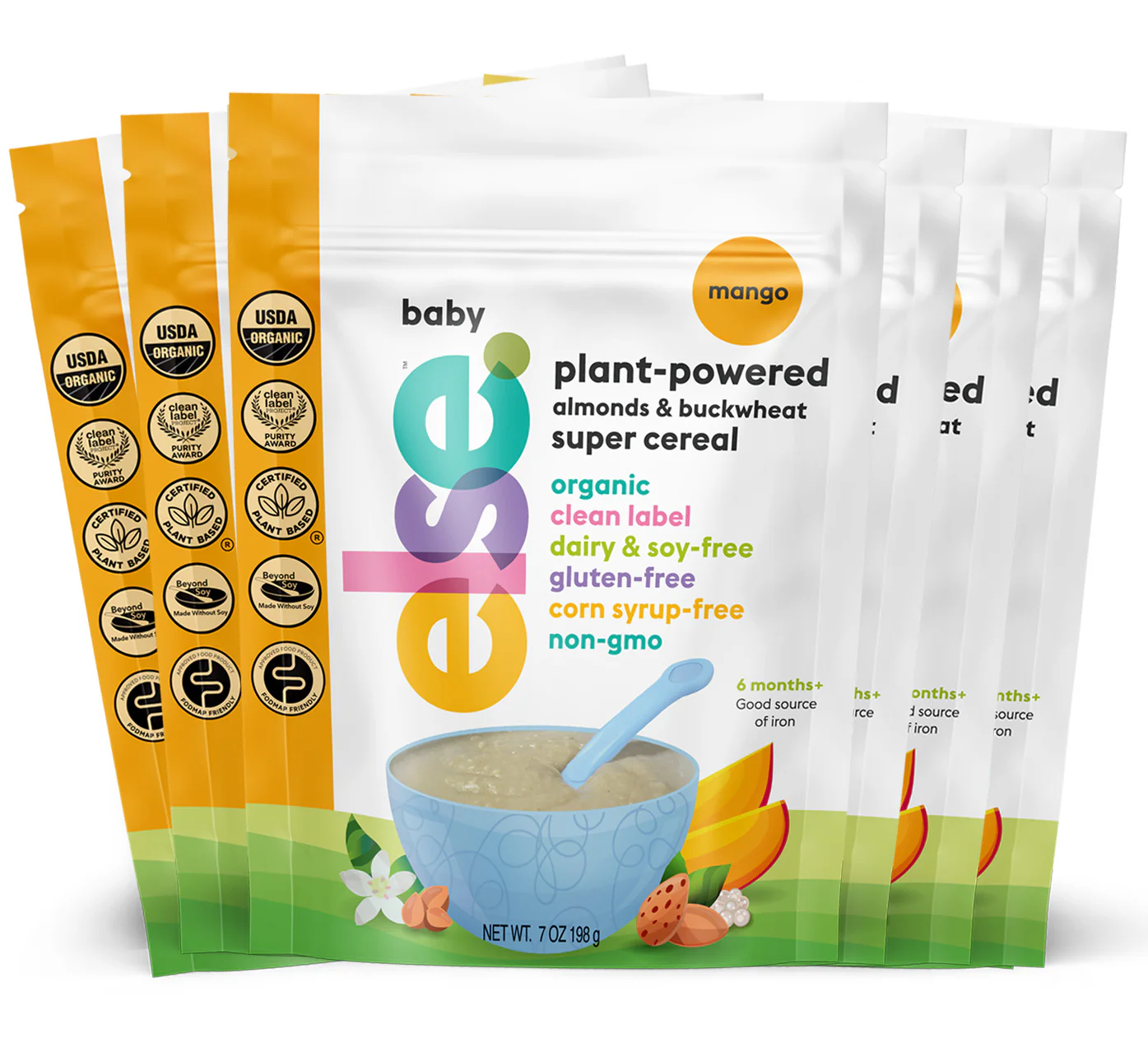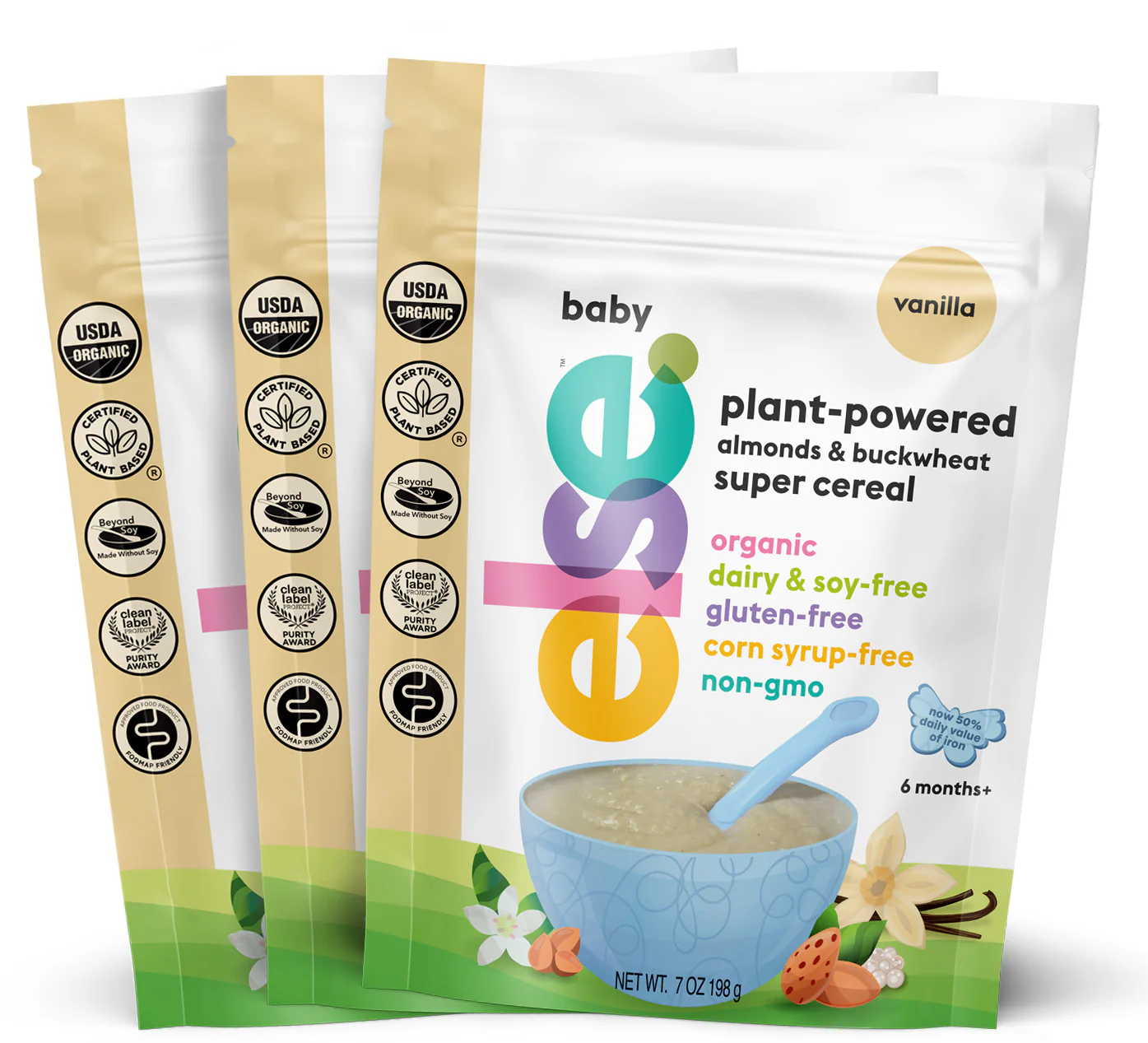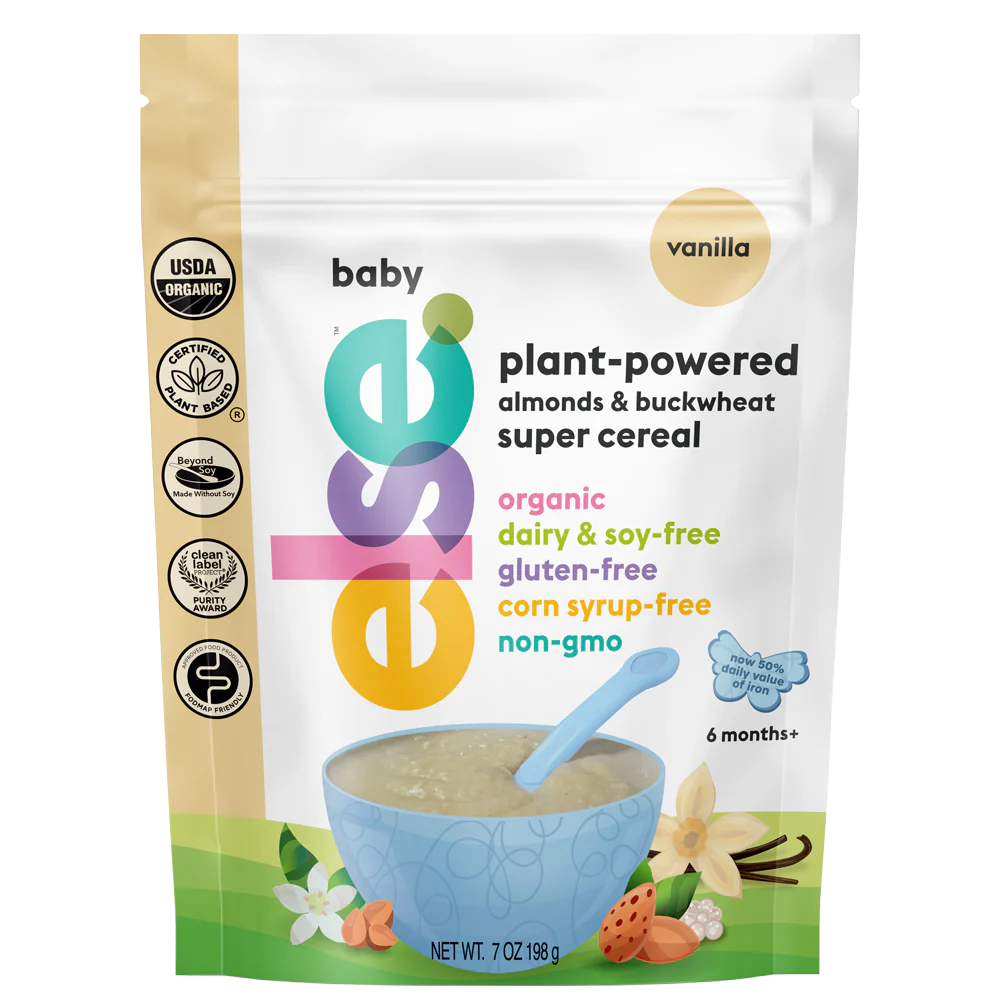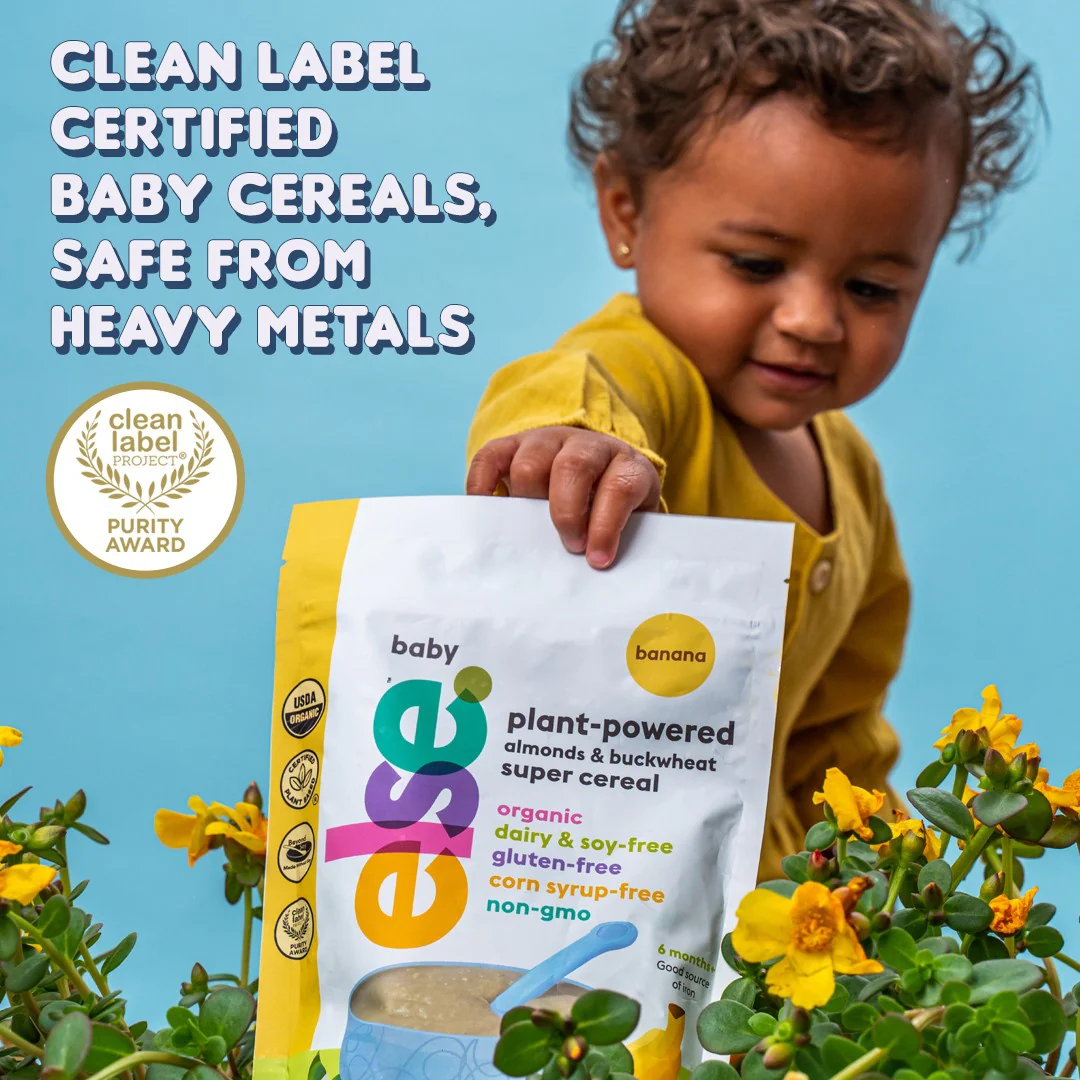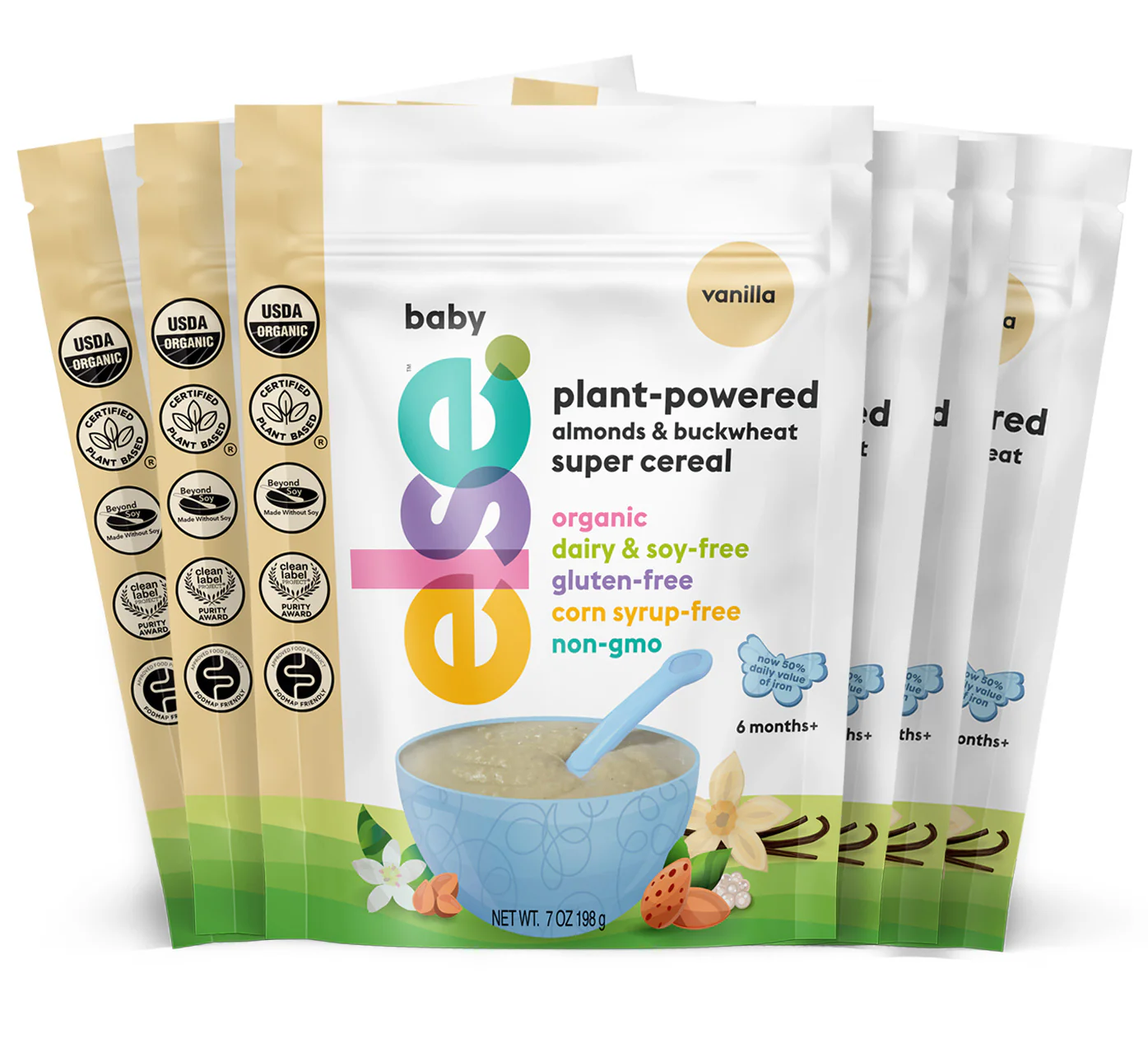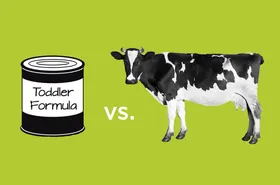Baby Formula Ingredients: The Definitive Guide to What to Look For and What to Avoid
Ensure your baby formula contains safe and healthy ingredients by following this definitive guide on what to look for and what to avoid. Learn how to make the best choice for your baby's nutrition.
Updated May 17, 2024

The baby formula market is expansive; there are so many choices! When deciding between brands, one of the biggest areas for comparison is the list of baby formula ingredients. But, if you don’t know what you are looking for, this can easily become overwhelming. To help you out, we’ve put together a comprehensive guide to what to consider when choosing a baby formula and deciding which kind is best. Baby formulas are meant to serve as the most nutrient-dense food source for growing babies. They are intended to mimic the nutritional composition of human breast milk and can be used throughout infancy. Whatever your baby’s needs are, understanding common baby formula ingredients can be helpful.
What’s in Breast Milk?
While breastfeeding is recommended as the primary and optimal source of nutrition for babies for at least the first 6-12 months of life (and given supplementally for up to two years of life or more), it’s not an option for all families - and that’s okay. Sometimes mothers may only be able to breastfeed supplementally or on occasion, and other times breast milk may not be an option at all.
Fortunately, other options are available to help ensure babies get the nutrients they need for proper growth. Baby formulas have been developed to mimic consistency and nutrients found naturally in breast milk, so that parents can utilize them with peace of mind when breastfeeding is not an option.
Why is breast milk so good for babies? It’s nature’s perfect food for new humans, and contains a unique composition of nutrients needed to jumpstart growth and development, promote weight gain, and optimize immunity. Breast milk contains the following basic compounds and nutrients:
- Water: Breast milk is made up of around 87-90% water.
- Protein: Breast milk contains approximately 60% whey and 40% casein milk proteins. These are easily digested proteins for babies.
- Fats: Breast milk is rich in healthy long-chain fatty acids. Fat is essential for brain and nervous system development and healthy vision. It is also required for the proper absorption of fat-soluble vitamins A, D, E, and K. Fats also provide 9 calories per gram, making them a primary source of calories for babies.
- Carbohydrates: The primary carbohydrate in breast milk is lactose, which makes up nearly 40% of the total calories it provides. Lactose helps promote a healthy balance of good bacteria in the digestive tract and boosts the absorption of nutrients like calcium, magnesium, and phosphorus. Breast milk is also rich in oligosaccharides, complex sugars that feed good gut bacteria and prevent infections.
- Vitamins and Minerals: While many micronutrients are influenced by the mother’s diet, breast milk typically contains enough vitamins and minerals to support normal infant growth - except for vitamins D and K.
- Infection-fighting compounds: These include an array of enzymes, growth factors, antibodies, and hormones. Breast milk is designed to help shape your baby’s natural immune defense. Some examples include Lactoferrin, Secretory IgA, Lysozyme, and Bifidus factor, which have unique purposes in an infant’s gastrointestinal tract. They help protect against microbes that can cause infections like E. Coli, Salmonella, and coliforms. It may also help prevent the development of certain allergies and promote the growth of protective Lactobacillus bacteria.
As you can see, breast milk is full of nutrients that are critical for baby formula to contain if this is to be their primary nourishment.
Baby Formula Basics
Commercial infant formula has been around since the late 1800s. Formulas have evolved over time per consumer demands, preferences. Furthermore, growing evidence has shown that to nourish babies best, an alternative to breastfeeding is needed.
What is on the baby formula ingredients list? There have long been three main types of baby formulas on the market: cow’s milk protein-based, soy protein-based, and non-dairy specialized formulas like the hydrolyzed formula with broken-down proteins to increase digestibility. These ingredients have mixed in to resemble breast milk as much as possible.
There are also a few options when it comes to how baby formulas are prepared. Baby formulas may come in powdered form, which requires mixing with water. Powdered formula for babies is usually the least expensive option. Another type of baby formula is the concentrated liquid formula, typically sold in cans, and needs to be mixed with additional water to prepare.
Lastly, there are many ready-to-use formulas. Just as the description implies, these formulas are premade and premixed, simply requiring the opening of a cap to serve to your baby. While ready-to-use formulas are the most convenient option that requires no prep work, they’re also usually the most costly. The best choice for you really depends on personal preference, budget, and your need for convenience.
What’s in Baby Formula?
A baby formula ingredient list can vary widely, but there are certain components that must be present. The Food and Drug Administration (FDA) requires minimum amounts of 29 different nutrients in baby formulas. At least 9 of those have specified levels that cannot be exceeded for every 100 calorie-serving of formula. Note that baby formulas are designed to meet the highly complex nature of an infant’s biological needs. Because breast milk is the optimal source of nutrition for babies, baby formula exists to mimic its composition as closely as possible in both its physical and nutritional properties.
This is precisely why it’s not safe or appropriate to substitute milk beverages, whether dairy or plant-based, in place of baby or toddler formula, or breast milk for babies. Milk beverages like these simply do not have the caloric density, nutrient composition, or carefully planned components to support a baby’s growth and development. It would, therefore, be dangerous to use them as a substitute.
There are also a variety of prebiotic oligosaccharides mixed into the powder formula or any other form of baby formula to mimic the gastrointestinal tract of breastfed babies. This includes stimulating the growth of bifidobacteria and lactobacillus. Stick to baby formulas with the purpose of nourishing babies well. Here is a baby formula ingredient list, which tells you everything required when creating them:
- Protein
- Fat
- Linoleic Acid
- Fat-Soluble Vitamins A, D, E, K
- B Vitamins: B6, B12, Niacin, Thiamine, Riboflavin, Pantothenic Acid, Folic Acid
- Vitamin C
- Calcium
- Phosphorus
- Magnesium
- Iron
- Zinc
- Manganese
- Copper
- Iodine
- Selenium
- Sodium
- Potassium
- Chloride
- Only required to be added to non-milk based formulas: biotin, choline, inositol
These nutrients are either naturally found in the components used to make the formula (e.g., cows’ milk, soy, etc.). Or they are added through fortification to ensure the final product meets the required amounts per serving for babies and doesn’t exceed the regulatory maximums. Else Nutrition's Baby Super Cereal is plant-based, gluten-free, and the perfect introduction to solid foods formulated to be safe from heavy metals and other nasties.
Ingredients to Avoid in Baby Formula
Baby formulas must include the ingredients above, but what else is included in their composition depends on the manufacturer’s formulation. In some cases, there may actually be harmful ingredients in the baby formula that don’t stand out right away. The best way to get a sense of what’s in baby formulas is to compare the ingredient labels of multiple brands and avoid those you suspect will trigger signs formula doesn’t agree with baby.
Here are a few common commercial harmful baby formula ingredients that you may want to avoid:
- Corn syrup, high fructose corn syrup, and other added sugars, as these may contribute unnecessary sweeteners to your baby’s diet.
- Added DHA and ARA, as these are commonly processed using hexane solvents, a neurotoxin, and are not necessarily beneficial in this scenario.
- Palm oil, which is highly destructive to the environment and may inhibit calcium absorption in infants.
- Carrageenan is a thickener derived from seaweed that, while generally recognized as safe (GRAS), may cause intestinal inflammation as demonstrated in some animal studies.
- Heavy metals and pesticides, which are not listed on the label, should also be avoided. But, you can minimize your exposure by choosing products that have been independently tested for these contaminants.
- Hormones and antibiotics, which may be present in dairy-based baby formula as a result of animal agriculture practices.
- Artificial, synthetic flavors, or colorings, may increase the likelihood of hypersensitivity and behavioral disorders.
» Discover the key signs that formula isn't suitable for your baby
How to Choose a Baby Formula
A lot of information can be derived from perusing the baby formula ingredient list and nutrition facts panel. Below are a few areas for consideration when choosing a formula.
Protein source
As mentioned, there are three main types of baby formula, with subcategories of each.
Milk formulas are made with treated cow’s milk to make it more digestible for little tummies. These usually have iron added to them to prevent iron deficiency anemia, as dairy is a poor source of iron. The carbohydrate source in baby formula is generally lactose, but could also include maltodextrin, corn syrup solids, or sucrose.
“Gentle” milk-based formulas have a reduced amount of lactose, and lactose-free formulas have the lactose removed. Goat’s milk formula contains many of the same proteins that can cause allergic reactions, and has only slightly less lactose than cow’s milk.
A soy based formula has thus far been the primary option for dairy-free families, as well as babies with lactose intolerance, galactosemia or milk allergy. But, soy is often genetically modified, so it may be worth looking for a non-GMO, organic label on these.
Hydrolyzed protein formulas, are also a type of easier to digest and tolerate. Or, you could look for dairy and soy free formula alternatives like Else Nutrition if you look for plant-based alternatives to feed your little ones or when tummies sensitivities and intolerances occur.
Fat source
Baby formulas typically contain a blend of several oils that mimic the fatty acids in breast milk. Some examples of these oil blends include safflower, soy, coconut, palm, or palm kernel.
Extra ingredients
Some formulas have rice starch added, intended to help babies who are prone to reflux keep formulas down. Other formulas have been specifically made for premature and low birth weight babies, incorporating extra calories and nutrients to support catch-up growth. Some formulas are enhanced with extra ingredients such as the omega 3 fats docosahexaenoic acid (DHA) and arachidonic acid (ARA), which are found in breast milk and fatty foods. Research indicates that DHA and ARA can help with normal brain and vision development in babies, but other studies have found no significant impact at this age. Additionally, some baby formulas contain prebiotics and probiotics, but this is not required by the FDA. While these compounds have the potential to support digestion, immunity, and a healthy gut in general, research is ongoing around whether adding them to baby formulas is beneficial. Else Nutrition's Baby Super Cereal provides essential nutrients in a simple, easy-to-digest form.
Expiration date
While most foods don’t expire on the exact date listed on their packaging, it’s better to play it safe when it comes to dates on baby formula. While consuming potentially expired foods is typically less risky for adults, babies are still developing immunity. They may not be as well-equipped to handle potential contaminants in expired formula. So, always be sure to check the expiration dates on your formula.
Other Tips
Your child has unique needs, and only you know what those are. While it can be helpful to discuss what formulas other parents are using, keep in mind that their baby may have different tolerances than yours. If your baby has a medical or health condition that may influence the type of formula, it’s a good idea to speak with your pediatrician or registered dietitian to determine the best options. Furthermore, you may want to consider other factors involved in choosing the right formula for your family. For instance, the cost of the product and how that fits into your household budget, as well as the labor involved in its preparation. What type of baby formula makes the most sense for your household and your baby? Lastly, you can always change baby formulas as needed. If you start with one kind and it ends up not working well, there are other options you can consider and it’s typically pretty easy to transition to a new one.
» Check out a step-by-step guide for supplementing your baby with formula at night
Else Nutrition Infant Formula Composition
Else Nutrition formulas have been designed with the modern eco- and health-conscious parent in mind. Else aims to offer a whole food, plant-based alternative to milk-based, soy-based, or protein hydrolysate organic formula for a cleaner and safer product. Else incorporates almonds and gluten-free buckwheat to provide protein, unsaturated fat, and a wide array of micronutrients. Tapioca maltodextrin is a tasteless digestible carbohydrate made with water and all-natural enzymes, that has no smell or flavor. Formulas made by Else are made without solvents or chemical or hexane extraction. Ingredients are minimally processed, organic, non-GMO, globally patented, and made primarily with whole plant components. Rather than breaking foods down into smaller building blocks using processing methods, Else uses whole plant foods as much as possible. Choosing the right baby formula for your child may seem overwhelming, but understanding what to look for can help you pinpoint the best option and feel confident in your decision.
The content and advice provided in this article is for informational purposes only and is not a substitute for medical diagnosis, treatment, advice for specific medical conditions. Always consult a pediatrician to understand the individual needs of your child.




